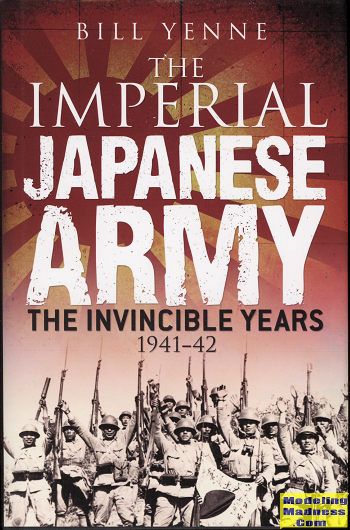 At the start of
the Pacific War, Japan had the most experienced army in the east. This was due
to years of fighting in China, which honed not only their troops but also their
strategists. Japan also learned quite a bit from watching how Germany managed
their war effort and learned from their example.
At the start of
the Pacific War, Japan had the most experienced army in the east. This was due
to years of fighting in China, which honed not only their troops but also their
strategists. Japan also learned quite a bit from watching how Germany managed
their war effort and learned from their example.
Always fans of the 'big battle/campaign', Japan launched the
Pacific War on several fronts. It first went after what it saw as their main
adversary, the US with attacks in Hawaii, Guam, and the Philippines. This was as
much to reduce American air and naval power as anything else. In that, they were
fairly successful. Meanwhile, they also attacked the British in Malaya and Burma
as well as the Dutch in the East Indies and the Australians in the southwest
Pacific. At this time, these nations were fully involved in the war in North
Africa or had been overrun by the Germans and were in no position to provide any
sort of relief.
In terms of air and naval power, this area was considered to
be a bit of a backwater and so the forces were inadequate, poorly armed and
generally equipped with second rate equipment. What all of this did was enable
the Japanese to move far quicker in conquering these areas as they had planned.
It gave the generals and admirals 'victory fever' and the belief they were
invincible. Well, for about 7 months, that was the case, but that all came to a
halt for the Navy at Midway and the Army at Guadalcanal.
This book is about those invincible years. It includes not
only the Japanese strategy and planning but also the Allied attempts to stop
what seemed at the time to be a juggernaut. It seemed that the Japanese did
everything right and the Allies everything wrong. Indeed, there was a definite
lack of understanding of the situation on the Allied part. Much of that was the
belief that the Japanese were stronger than what they actually were. There was
also a somewhat defeatist attitude that was less than helpful.
We are provided insights into all of the major areas where
the Japanese fought aside from China. Often armies that were successful in one
campaign were pulled out and sent to other areas to bolster the attack groups,
leaving behind a portion to consolidate their conquests. The Japanese also tried
some innovative tactics for this part of the world including seaborne landings
and parachute drops, the latter having been inspired by watching the Germans.
They made wide use of bicycles in Malaya to move troops rapidly, as the Japanese
were fairly devoid of motorized transport. Their engineers were able to quickly
repair destroyed bridges that helped speed along the movement of troops.
In all, it makes for a great read and has several small photo
sections that give some flavor to the book. It is a subject that has not been
written about much in the West and is a must read for enthusiasts and history
fans alike.
September 2019
Copyright ModelingMadness.com. All rights reserved.
For more on the complete line of Osprey books,
visit www.ospreypublishing.com .
If you would like your product reviewed fairly and quickly, please
contact
the editor or see other details in the Note to
Contributors.
 At the start of
the Pacific War, Japan had the most experienced army in the east. This was due
to years of fighting in China, which honed not only their troops but also their
strategists. Japan also learned quite a bit from watching how Germany managed
their war effort and learned from their example.
At the start of
the Pacific War, Japan had the most experienced army in the east. This was due
to years of fighting in China, which honed not only their troops but also their
strategists. Japan also learned quite a bit from watching how Germany managed
their war effort and learned from their example.